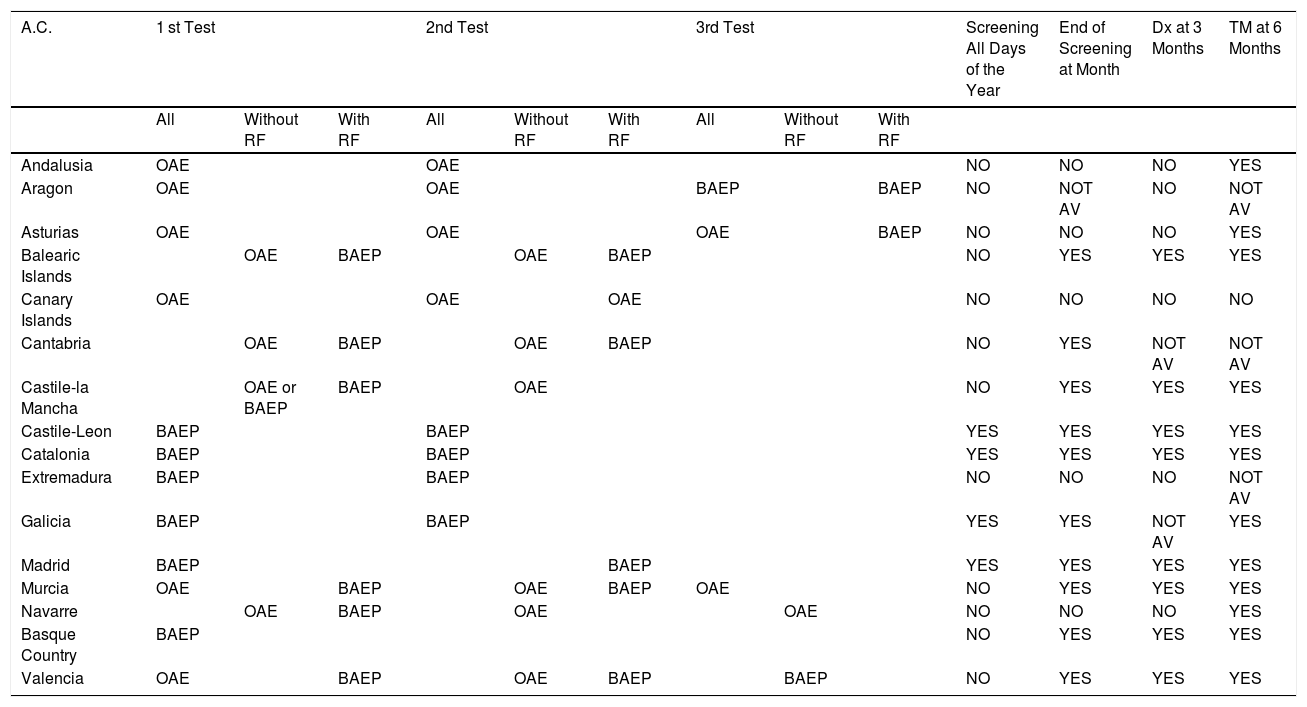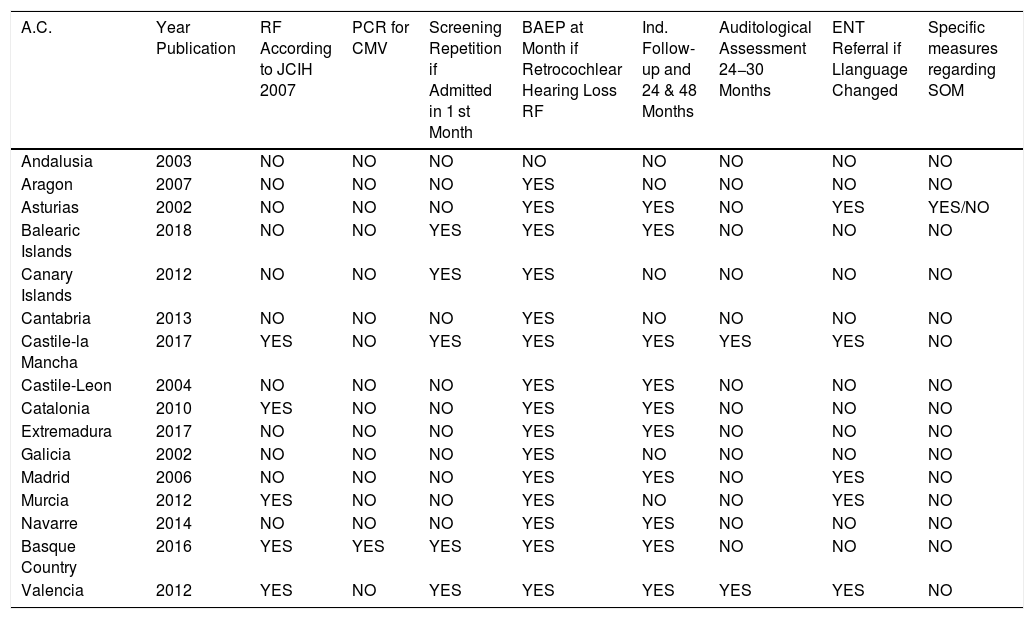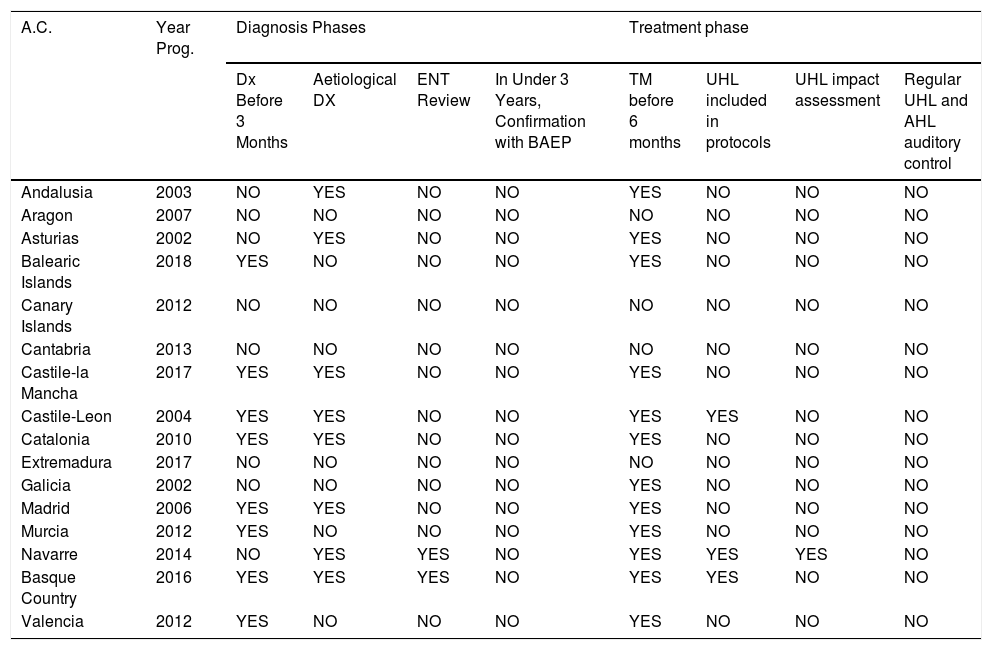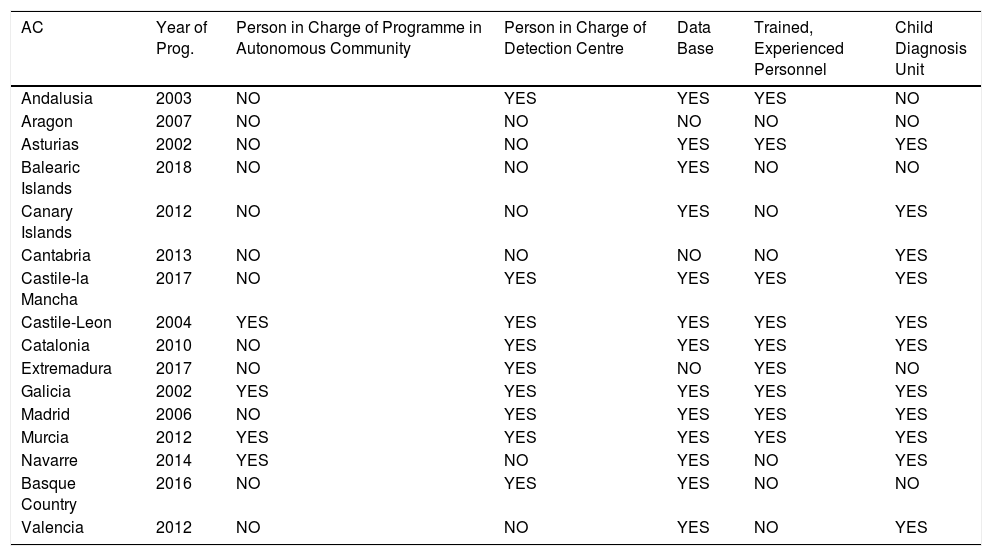In 2003, The Ministry of Health and Consumption, together with the Autonomous Communities (CCAA), approved a minimum and basic document concerning the establishment of Early Hearing Detection and Intervention (EHDI) State Programmes. Since then, the Commission for the early detection of hearing loss (CODEPEH) has made several updates and recommendations to improve these programmes.
The objective of this study is to carry out a comparative analysis of how the CCAA established their EHDI programs and if they integrate the recommendations made by CODEPEH until 2017.
Material and methodThe programmes (or related documents) of 16 CCAA available on line or paper are reviewed
ResultsThe 16 EHDI strategies analyzed are different, either in the number of test to be performed, the time in which they are performed or the techniques used. More than a third of these programmes were published before 2010 and have not been updated. Otoacoustic emissions (OEA) is the chosen technique as the first screening test in nine of the 16 CCAA. Only one CCAA incorporates the salivary polymerase chain reaction (PCR) test for cytomegalovirus (CMV) in children with altered screening test.
ConclusionAll CCAA perform EHDI programmes but the heterogeneity does not allow drawing reliable conclusions about the result of the screening process and it would be necessary to aim for unification with the elaboration of a national programme and an integrated general database.
En 2003, el Ministerio de Sanidad y Consumo, junto con las Comunidades Autónomas (CCAA), aprobaron el documento sobre los contenidos básicos y mínimos para el establecimiento de Programas de Detección Precoz de la Sordera, desde entonces la Comisión para la detección precoz de la hipoacusia (CODEPEH) ha realizado varias actualizaciones y recomendaciones de mejora de estos programas.
El objetivo de este trabajo es realizar un estudio comparativo de cómo han plasmado las CCAA, en sus Programas de Detección Precoz de la Sordera, las recomendaciones realizadas por la CODEPEH hasta 2017.
Material y métodoSe han revisado los programas (o documentos afines) de 16 CCAA disponibles en línea o en papel.
ResultadosLas 16 estrategias de detección precoz analizadas son diferentes, ya sea en el número de pruebas a realizar, los tiempos en los que se realizan o las técnicas empleadas. Más de un tercio de estos programas fueron editados antes del 2010 y no han sido actualizados. Las otoemisiones acústicas (OEA) es la técnica elegida como primera prueba de cribado en 9 de las 16 CCAA. Solo una Comunidad incorpora la realización de la prueba de Reacción en cadena de la polimerasa (PCR) en saliva para Citomegalovirus (CMV) en niños con prueba de cribado alterada.
ConclusionesTodas las CCAA realizan cribado auditivo pero la gran diversidad entre programas, dificulta sacar conclusiones fiables sobre el resultado final del mismo y sería necesario tender a una unificación con la elaboración de un programa nacional y una base datos común.











